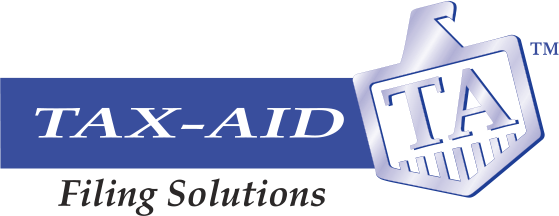What you need to know about SaaS Tax Solutions
As the tax and accounting industry continues to evolve, so too do the tools and technologies that professionals use to tackle the daily challenges of the field. Nowhere is this seen more clearly than when discussing filing solutions. Whether previously filing with paper forms, or software downloads and CD’s, many tax and accounting pros find themselves facing a transition to more modern cloud-based platforms.
The shift from traditional download and CD-based software to Software as a Service (SaaS) models is gaining momentum in the developing tax preparation and filing landscape. This transition is driven by the benefits of real-time updates, accessibility, and other advantages that make SaaS the preferred choice for managing 1099 and W2 filings. But what exactly is SaaS, and how does it compare to on-premise software?
What is SaaS (Software-as-a-Service)?
In simple terms, SaaS stands for “software as a service.” It refers to software applications that can be accessed via the internet—in other words, without downloads. Users typically pay a recurring subscription fee annually or monthly to access these remotely hosted applications through web browsers.
A popular example of SaaS is Salesforce, a customer relationship management (CRM) platform that pioneered this delivery method. With SaaS, companies can deliver applications over the internet, freeing users from complex software and hardware management. Instead of installing and maintaining software, you can access it online.
What is On-Premise Software?
On-premise software are downloaded, installed, and run on computers within the organization or individual’s premises using the product.
While a SaaS product will be hosted on a remote facility, like a server farm or the cloud, on-premise software solutions are hosted in-house. Historically, on-premise software has been considered more secure, as data is stored locally, affording greater control. However, this belief has been largely disproven, leading to a surge in the popularity of cloud-based software.
Factors to Consider When Choosing SaaS vs. On-Premise Solutions
Implementation and Accessibility
SaaS: Once you have chosen the right platform, implementation is straightforward. Because the application is hosted on the Internet, there is no need to install software, manage upgrades, or handle servers. This simplicity flattens the learning curve and makes SaaS the right choice for most people, particularly those without extensive IT experience.
On-Premise: Implementation can be a longer process, as the organization needs to procure hardware to host software in-house. Typically, on-premise software offers more control but less flexibility, as the application can be set to ban outside access, or additional VPN access is needed to allow external access.
Cost Comparison
SaaS: SaaS software typically has a lower barrier to entry in terms of costs. Access to these types of software is subscription-based, so the upfront costs are minimal. You pay according to your license type, the number of users, and other factors. SaaS solutions are also constantly updated, ensuring you have the latest version.
On-Premise: IT departments face much higher upfront costs with on-premise software. While ongoing maintenance costs may be low, in-house solutions often require expanded IT infrastructure, trained personnel, and hardware updates.
Scalability, Growth, and Upgrades
SaaS: SaaS solutions are typically optimized for growth and are easy to scale up or down based on your business needs. Additional users, remote users, bandwidth, licenses, or servers can be added easily during your subscription term, and upgrades for additional capabilities are easy to process.
On-Premise: These solutions are more complex in terms of growth and scaling. Rapid growth periods often make SaaS a more practical choice. In-house hardware and on-premise software hosting require significant investment in time and money to expand or scale back.
Maintenance and Support
SaaS: Offered by third parties as ready-to-use products, SaaS clients are not responsible for application maintenance or support. Vendors provide patches and updates to ensure optimal functionality. Many SaaS products also have extensive online communities and knowledge bases to help troubleshoot issues.
On-Premise: Organizations are responsible for upkeep and support. An in-house team is often required to perform maintenance and ensure smooth operation, eliminating downtimes and fostering productivity.
Cybersecurity and Compliance
SaaS: Storing data in cloud-based SaaS applications is less risky than storing it on-premise. SaaS vendors apply top-tier technologies to protect client data, but companies should ensure compliance requirements are met.
On-Premise: Proper cybersecurity measures are crucial, as on-premise solutions are hosted internally. This requires setting up security walls, compliance knowledge, and the ability to detect potential threats.
Finding the Right Option for Your Tax Filing Needs
Effectively assessing the benefits of SaaS vs. on-premise software is crucial when choosing the option that best suits your company’s needs. SaaS often wins out for tax filing, especially 1099 and W2 forms, due to its ease of use, real-time updates, and scalability.
Every organization has unique goals and capabilities, which come into play when deciding whether to invest in a remotely or internally hosted software solution. When choosing a solution, tax and accounting professionals should consider the implementation process, accessibility, budget, scalability, maintenance, and security.
Test-Drive Tax-Aid Filing for Your Tax Filing Needs (TaxAidFiling.com)
One of the best ways to understand the benefits of SaaS vs. on-premise products is to test-drive a few top contenders. Tax-Aid Filing offers a simple pay-as-you-go model, easy-to-use User Interface, advanced security measures and is backed by accessible expert customer support. Sign up for free and try it for yourself at TaxAidFiling.com.

